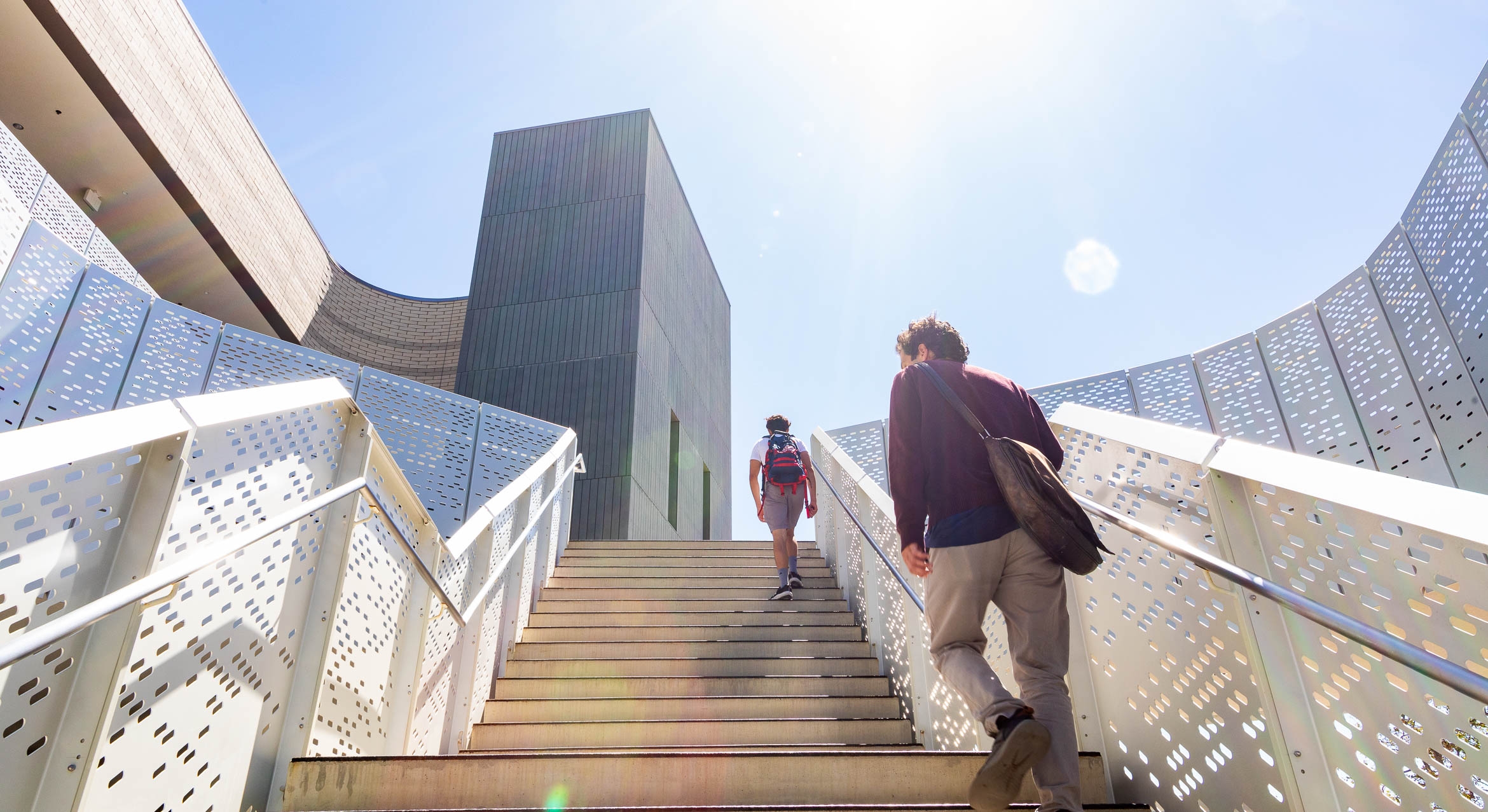
Working toward a clean energy future, the university launches a campus decarbonization study
Despite significant growth across the system, the University of California’s carbon emissions now are 30% lower than they were in 2009. Those reductions are the result of concerted efforts at every campus, including energy efficiency programs that have saved UC more than $400 million in energy costs, and the deployment of more than 100 on-campus solar projects.
At UC Santa Barbara, total greenhouse gas emissions in 2022 were 67% below 1990 levels — reductions primarily attributed to investments in energy efficiency and to strategic procurement of electricity generation from low-carbon sources. Today, 93% of UC Santa Barbara’s remaining operational greenhouse gas emissions are a result of combustion of natural gas on campus for heating and cooling. All UC locations are facing challenges to reduce emissions from on-site fossil fuel use in support of the university’s carbon neutrality commitment.
To help campuses meet this challenge, each has received funding for decarbonization planning efforts. UC Santa Barbara, with an allocation of $1 million, officially launches its Clean Energy Master Plan with a virtual kickoff meeting Wednesday, Oct. 25, at 5 p.m. The Zoom session (passcode: 93106) will include a high-level overview of the plan, its timeline and major components, and how this effort relates to the university’s broader and longer-term plans to fully decarbonize all of its assets and operations in an equitable, just and resilient manner. It will feature a presentation by engineering and technical advisors from the firm Introba, whose team will describe their approach and work plans for the coming year.
“UC Santa Barbara is already a leader among UC campuses in reducing campus greenhouse gas emissions,” said Professor Susannah Scott, co-chair of UCSB’s Decarbonization Project Committee and divisional chair of UCSB’s Academic Senate. “In conjunction with frontier UCSB research in climate change, this exciting project has the potential to allow us to do our part in addressing the climate challenge while further demonstrating our leadership in this area.”
With the intent to complete its campus study by the end of June, UCSB will undertake a technical investigation — detailed infrastructure assessments, cost estimates and scenario analysis — as well as an evaluation of the environmental and climate justice implications of moving from a fossil fuel-based heating and power generation infrastructure to the use of electricity for equivalent services. Pursuing both approaches is a requirement of the funding.
“What does it mean for our community, our region and our employees to implement whatever strategy we might end up pursuing — say, converting all gas heating sources to electric?” said Jordan Sager, energy manager at UC Santa Barbara. “What does that mean for our surrounding community? We’ll do a detailed assessment to answer that question.”
Accelerating UC efforts to decarbonize campus energy infrastructure is the largest remaining challenge to achieving the goals of the UC Carbon Neutrality Initiative and maintaining UC’s status as a leader in climate action. Decarbonization will be a challenge that is campus-specific, technically challenging, and capital-intensive. The estimated cost per campus is in the range $200-$500 million, and on some campuses may be higher.
By combining its buying power to directly procure carbon-free electricity, the UC already is able to provide clean, carbon-free power to seven of its campuses, including UCSB, at parity with standard electric rates. By 2025, all 10 campuses and six academic health centers will be required by UC policy to use 100% carbon-free electricity, and must accelerate efforts to eliminate their remaining sources of greenhouse gas emissions. The UC’s recently refined climate policy puts in place a framework and timetable for UC campuses and academic health centers to be fully decarbonized by 2045, corresponding to a 90% reduction in greenhouse gas emissions from changes in campus operations. The targets for reducing emissions get progressively larger for 2030, 2035, and 2040.
“The major crux of this is how to get to a 90% reduction in greenhouse gas emissions in campus operations, and that will be very different for each campus,” said Sager. “At UCSB, we are going to spend the next year determining the most feasible path or paths forward, how much will each cost, and what will the operational cost implications be. We are going into it with the mindset that all options are on the table for our campus.”
Shelly Leachman
Editorial Director
(805) 893-2191
sleachman@ucsb.edu



